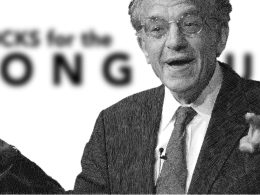As geopolitical storms brew and policy signals blur, markets have found themselves navigating an increasingly volatile terrain. In a engaging webcast1 hosted by WisdomTree, four seasoned market minds—Professor Jeremy Siegel, Global CIO, Jeremy Schwartz, Head of Fixed Income Strategy, Kevin Flanagan, and Macro Strategist, Sam Rines—break down the current macroeconomic environment with refreshing candor, tactical insight, and pointed political realism. The conversation revolves around Trump’s escalating tariff policies, potential Fed reactions, and what it all means for investors now and going forward.
Here’s the full landscape, decoded.
Tariffs: A “Self-Inflicted Wound” with Long-Term Scars
Professor Siegel gets right to the point. The newly announced tariffs are “a self-inflicted wound, an unforced error” and “not going to cure the situation... but it’ll moderate it,” he warns. And while political analysts might speculate on Trump’s motivations, Siegel sees clear economic consequences. “We’re not at a bear market yet. We could be… If we see retaliation, as we've seen from China... bear market is quite likely.”
Despite a robust employment backdrop, Siegel cautions that “deteriorating rapidly” is the phrase that now defines U.S. economic momentum. And he isn’t alone in that view. Sam Rines points out that “the more uncertainty you inject into the system, the more you’re going to have multiples compress,” ultimately creating a “wider band around expected earnings”.
In short: policy uncertainty is dragging valuation confidence lower.
Fed Forecasting: Don’t Trust the Dots, Watch the Direction
Siegel is especially keen to clear up misconceptions about Fed futures: “They're not unbiased,” he clarifies, predicting “probably about three cuts by the end of the year.” More importantly, he says, the Fed “should cut—no matter what the inflationary effect of this tariff is,” since tariffs distort inflation signals and blur economic indicators.
Citing a money supply growth rate of just 4% (historically closer to 5.5%), Siegel makes the case that the Fed has ample room to lower rates without fueling inflation: “We can afford to increase money by lowering rates. How do you increase money? You lower rates. That encourages loan demand.” But, he adds, “loan demand will shrink if the economy shrinks,” reinforcing the case for action.
Market Math: Still Rational Underneath the Chaos
In the professor’s signature valuation logic, he reminds investors that markets typically overreact. “If you wipe out earnings for two years… the answer is 10% [drop in value]... Not 20% or 30%,” he says, emphasizing the importance of perspective over panic.
He offered some powerful back-of-the-envelope math: “A 20 PE ratio is a 5% real return. With 3% inflation, that’s about an 8% return for equities... The 10-year is below 4%... You’ve got a nice equity premium now.”
Yet he also warns that the “history of the market is overreaction, always,” and that fear—especially about the unknown long-term impact of policy—tends to exaggerate short-term price moves.
Risk Sectors, Rotations, and Snapbacks
When asked about portfolio strategy, Siegel acknowledges the “reversal of the growth value trend” in recent weeks, a rotation he believes has been “accelerated by the tariff talk.” But lower rates may give dividend stocks new life: “What would you rather have, a 3% Treasury… or a 3% dividend yield of a stock at a reasonable price?”
Still, he is realistic about recession risk: “The probability of recession has definitely gone up,” meaning even dividend names must be screened for durability. “Those that have been dividend yield cut-resistant through economic cycles might do extremely well during this period.”
He also warns against being too clever with timing: “To move your clients more towards cash or bonds and [then] he tweets one thing… you're going to miss 2,000 points on the Dow in 10 minutes.”
Mag-7’s Decline: More Than Just Beta
Siegel tackles the sell-off in the Magnificent 7 head-on: “Their beta is greater than one... but [there’s also] a breakdown of the AI narrative,” he says. “Are the moats that give them the margins that are so high still attainable in the long run?” He floats the idea that firms like BYD could become “a rival for the Blackwell chip,” potentially undermining dominant U.S. tech names.
It’s not that AI is going away. But if margin moats narrow, so too do stock valuations.
Tariffs and the Political Minefield
Beyond the economics, Siegel offers a sobering civics lesson. He explained that while 51 senators had voted against the tariffs, overturning Trump’s policies would require two-thirds majorities in both chambers to override a veto: “That could be three, four months… but it’s not an impossible route.”
Still, he sees the political clock ticking. “If these tariffs take effect and the prices rise… it's going to be fixed in people's minds. ‘I don't like Trump's tariff policy.’” He adds, “That's not good for the Republicans in the midterm.” Ultimately, he believes Trump will seek an off-ramp and “trump that up as a victory” if the polling turns negative.
Global Watch: Germany, Japan, and the Rest
On the international front, Siegel sees a silver lining in Europe’s newfound urgency: “They needed a kick in the pants... That’s a positive.” As for Japan? “It is the oldest society trying to get back its mojo,” he says, stopping short of a bold call.
Sam Rines, however, offers a sharper lens, noting Japan’s corporate foresight: “The Japanese market is different than the Japanese economy… They very much stepped out and said, ‘We would much rather have the demographics of Kentucky than Tokyo.’” Companies like Toyota and Suzuki, he says, diversified their earnings exposure well ahead of this moment.
He flags other likely early negotiators on tariffs: “India, Mexico, Japan, South Korea… likely to know what the Trump administration is looking for and pretty easily get a minor stamp of approval pretty quickly.” Argentina may have made the first call, but “it’s just not a large enough economy… to move the needle.”
Bonds: Useful Now, Problematic Later
Kevin Flanagan raises a key fixed income question, which Siegel answers with characteristic clarity: “They'll cushion your short-term portfolio... but they are not great long-term investments and never have been.”
Indeed, while bonds serve as a hedge, especially in moments like these, Siegel urges clients to remain anchored in equities. “The main thing is keeping your people in the market,” he emphasizes. “When this period of volatility is over... I don’t think 3% bonds are going to last.”
Final Word: Stay the Course—But Know the Gameboard
For long-term investors, the message is clear: volatility is not new, nor is it fatal. From policy blunders to political brinksmanship, Siegel, Schwartz, Rines, and Flanagan paint a picture of a market at a crossroads—but not without a compass.
As Siegel concludes, “Stocks are the longest-term asset… this is a great long-term hold.” Just don’t blink when the Dow jumps 2,000 points in ten minutes.
Because in this cycle, tweets can be catalysts—and patience is premium.
1 WisdomTree. "Professor Siegel on Trump's Tariffs Impact." 4 Apr. 2025, www.wisdomtree.com/investments/multimedia/videos/professor-siegel-on-trumps-tariffs-impact.















